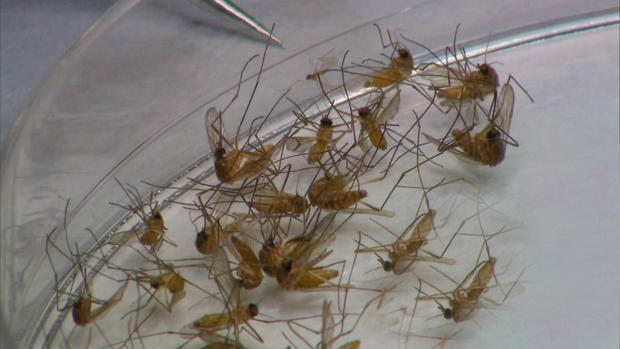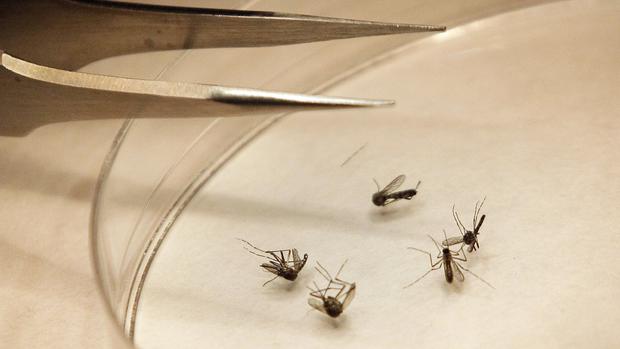CDC: 3,545 cases of West Nile Virus reported in U.S. so far this year
(CBS News) There have been 3,545 cases of West Nile virus reported in the U.S. as of Sept. 25, according to the latest statistics released by the Centers for Disease Control and Prevention (CDC) on Wednesday. Of theses cases, 147 have proven fatal this year.
The new numbers through last week are the highest number of West Nile virus disease cases reported since September 2003.
West Nile virus cases continue to climb, CDC says
What's making the 2012 West Nile virus outbreak the worst ever?
CDC: "Dramatic" jump in West Nile virus cases as US faces one of largest outbreaks ever seen
About 51 percent, or 1,816 cases, are classified as neuroinvasive disease or brain-related, which include meningitis or encephalitis. The remaining 1,729 cases are non-neuroinvasive. Seventy percent of the reports are coming from eight states: Mississippi, South Dakota, Michigan, California, Louisiana, Oklahoma, Illinois and Texas.
About 38 percent of the cases come from Texas alone. The virus has killed at least 43 people in the state, the most ever recorded in Texas history. More cases have been reported in 2012 than in all of 2003, and numbers are supposed to increase through mid-October.
West Nile virus infections usually occur in the summer through fall months, according to the CDC. Mosquitoes carry the disease after feeding on infected birds, and then the insects transmit the disease to humans. In rare cases, it can also spread through blood transfusions, transplants, breastfeeding and pregnancy from the mother.
What makes infections so prevalent this year is the weather. Dr. David J. Dausey, chair of the public health department at Mercyhurst University in Erie, Pa. and director of the Mercyhurst Institute for Public Health, told CBSNews.com thatthis year's higher temperatures and fluctuations of rainfall have made it a perfect environment for mosquitoes, increasing the West Nile outbreak.
Dr. B. Graeme Lockaby, associate dean of research and professor at the School of Forestry & Wildlife Sciences at Auburn University in Alabama, added to CBSNews.com that drought conditions mean that people leave more stagnant water, which also increases places near humans where mosquitoes can propagate.
While in 80 percent of the cases the infected won't have any symptoms, 20 percent develop "West Nile fever." Symptoms include fever, headache, body aches, nausea, vomiting and occasionally a skin rash on the chest, stomach and back. This version is non-neuroinvasive, but may last for several weeks.
About one out of 150 people will get the neuroinvasive form of the disease, which can be severe. Risk increase in people over the age of 50. These patients have high fever, headache, neck stiffness, stupor, disorientation, coma, tremors, convulsions, muscle weakness, vision loss, numbness and paralysis. Neurological damage may be permanent.
The CDC recommends installing or repairing windows and screen doors, getting rid of standing water where mosquitoes can breed, using EPA-registered active ingredients in your insect repellant and wearing long sleeves from dusk until dawn when outdoors and mosquitoes are most active.


